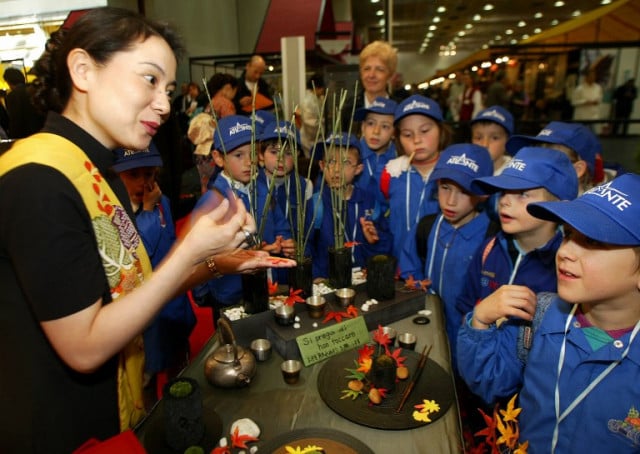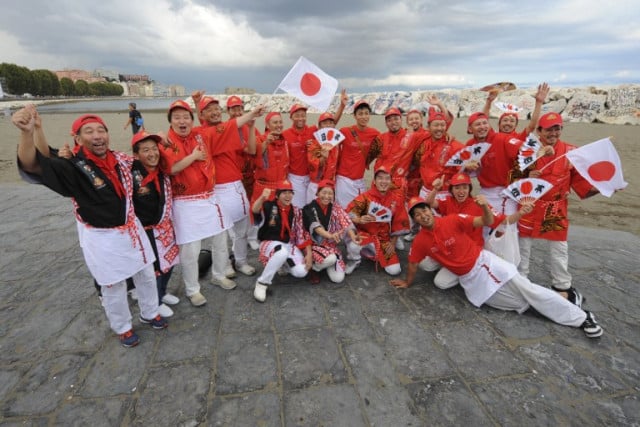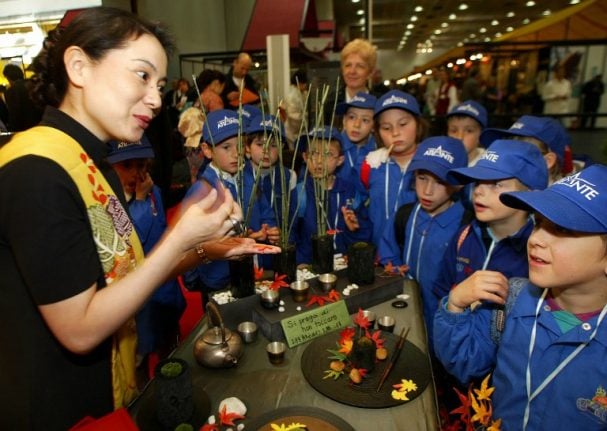I’ll take the risk of the deserved backlash and come right out and say it: ask most Italians what's their favourite food, and they will probably tell you: la cucina di mia mamma.
I say this because, having lived in Italy for over a year now, and having been coming here each summer for three years to work, I have had this conversation many times. And each time, I get a similar answer. It may be that mamma competed with nonna in some families, or that the best food is anything from where you come from originally and grew up.
Because let’s face it, Italians are not known for being the most adventurous eaters on the planet. This is a country where often the “worst food in the world” is from the neighbouring town.
This is not to say that you can’t find foreign food in Italy. You can. I live in Milan, where you can find Peruvian, Chinese, Indian and American restaurants, and some of them are pretty good. There’s an ever-growing interest in vegan food here and in Italy in general.

Foreign fast food is easy to find in Italy, but can you get the good stuff? Photo: Tiziana Fabi/AFP
But unlike my own country, Britain, or the United States, the food of other countries isn’t held in anything like the same regard as the national dishes. Given the choice, nine times out of ten, Italians will opt for something traditional. Foreign meals are eaten almost as a novelty, or a treat for the kids.
Why is this? One reason could be that, having experienced relatively little immigration in its modern history, Italy hasn’t had the same experience of foreigners coming to a strange country and offering their food to the locals as the best way of surviving in their new home.
READ ALSO:
In fact, the experience for Italy has been the opposite; Italians have spread out all over the world, especially to North and South America, Australia and Britain. Where they went, their food went too. And no one benefitted more than those of us living in countries where until recently olive oil was only to be found in the pharmacy.
Italians have enriched the kitchens of homes and restaurants across the world, and sometimes, when presented with a bowl of spaghetti alla vongole, I feel like getting on my hands and knees and kissing the feet of the cook responsible for such glories.
It is this attitude, shared by Italians and non-Italians alike, that makes many Italians ask a perfectly reasonable question when I enquire as to whether they eat food from other countries: “Why would I?”
And sometimes I think “fair enough”. I mean, if the local stuff is this good, why would you bother trying something that could never compare?

Italian schoolchildren discovering sushi at a food fair in Turin. Photo: Gabriel Bouys/AFP
Rather than answer this, I want to focus on why one food in particular has been more successful probably than any other in penetrating the wall of Italian culinary parochialism: Japanese food.
Now, again, I want to stress that the observations I am making here are purely anecdotal and based on my own experience of Italy. I can’t speak for a whole country, and no one ever should. But I can say that, in my capacity as a teacher, I speak to a lot of young Italians, and once they have finished eulogizing their grandmother’s pasta carbonara, they will say that one of their absolute favourite foods is sushi.
Wait, what? Sushi? Italians like Japanese food? Think of it, Italy and Japan. Two countries that are thousands of miles apart, two countries that, on the surface at least, have little to nothing in common, and two countries where historically there hasn’t been a great deal of cross-cultural exchange (the Romans got far, but not as far as Tokyo).
I was in Tokyo recently, and saw countless Italian restaurants. The Japanese are mad for Italian food, especially pizza. They are voracious consumers of foreign food, so this didn’t surprise me. But I was surprised when I came to live in Italy and found that, even in my girlfriend’s town of Carpi in Emilia-Romagna, there are two places serving California rolls and sashimi.

Japanese chefs competing in a pizza competition in Naples. Photo: Mario Laporta/AFP
So why Japanese over other cuisines such as Indian or Chinese? Here is my totally unproven and entirely speculative explanation: Japan and Italy have quite a lot in common, and not just when it comes to food. Both are ancient civilisations. Both are seafaring nations. Both have made a remarkable cultural contribution to the world. Both make truly awful and downright weird television.
And both of them have a similar attitude to food. Think of the central elements to the cuisines of both countries: a strong emphasis on local and fresh ingredients. Simple preparation that allows those ingredients to speak for themselves. A long and rich coastline with fantastic seafood. A lush and green interior perfect for farming animals, fruits and vegetables.
And perhaps most important, a desire for the food to be as beautiful to look at as it is delicious to eat. In Japan, presentation is everything when it comes to food, and I think that Italians, who are some of the most visual people in the world, know beauty when they see it, no more so than when it’s on the plate.
True, often the Japanese food being served in Italy is a pale imitation of the real thing, and can’t even compare. But in a country this protective of its own food and suspicious of foreign fare, it is a testament to both cultures that the food of one people is so popular with another.
Long may this continue, and I look forward to the day when I convince an Italian to take a bite into a Scotch egg and say: Not bad.
If you're looking for good, affordable Japanese food in Milan, I can recommend a few places that my partner (who spent over a year living in Japan) and I love:
-
Mi-Ramen: So far the best ramen we have had in the city. One sip sent us both straight back to Tokyo. I recommend starting with the gyoza, which were the perfect combination of crispy on the outside and fresh on the inside.
-
Maido: Don't miss the okonomiyaki at this restaurant that specializes in Japanese street food.
-
Casa Ramen: Small but authentic menu, with a good starter option of steamed buns. The ramen was very good, but the only drawback is that it doesn't take reservations.
- Osaka: For something fancier, try this traditional restaurant that's popular with Japanese expats.
Liam OConnor is an English teacher in Italy. Originally from the UK, he moved to Carpi in Emilia-Romagna and now lives in Milan.
This article was first published in 2018.




 Please whitelist us to continue reading.
Please whitelist us to continue reading.
Member comments